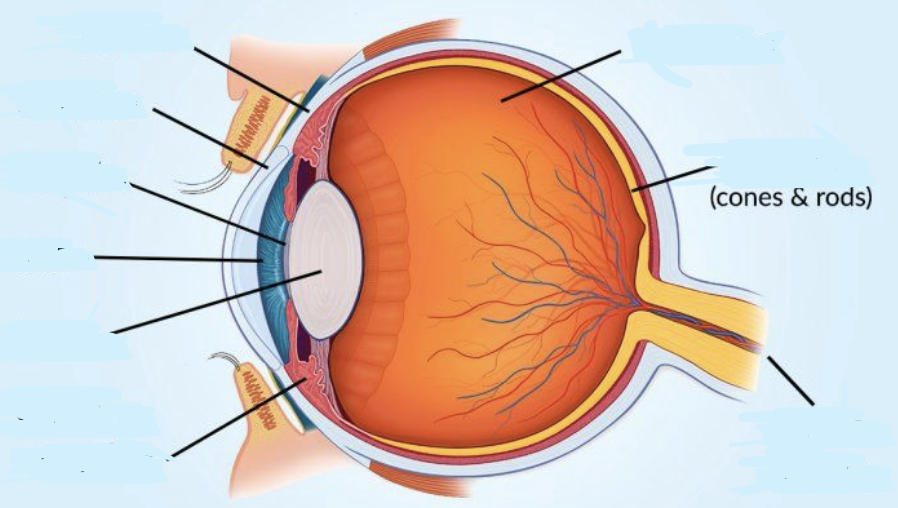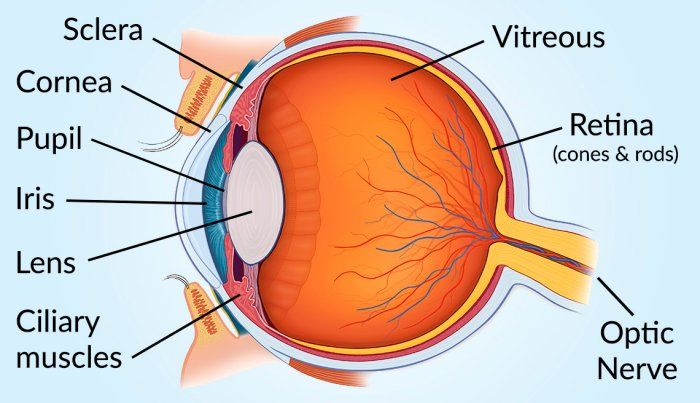Psychology Sac #2
1/18
There's no tags or description
Looks like no tags are added yet.
Name | Mastery | Learn | Test | Matching | Spaced |
|---|
No study sessions yet.
19 Terms
Selective Attention
Focusing on one thing while ignoring other things around you.
Example: Listening to a friend talk in a noisy room.
Divided Attention
Paying attention to two or more things at the same time.
Example: Talking on the phone while cooking.
Sustained Attention
Focusing on one thing for a long time without getting distracted.
Example: Reading a book for an hour.
Processing
Bottom-Up Processing and Top-Down Processing. Bottom up process is understanding something based on what your senses detect first (starting with the details). And top-down processing is Using what you already know or expect to understand something (starting with the bigger picture).
visual perception : reception, transduction, transmission, interpretation.
Reception – Your eyes receive light from the environment.
Transduction – Light is converted into electrical signals by cells in your retina.
Transmission – The electrical signals are sent to the brain through the optic nerve.
Interpretation – The brain makes sense of the signals and forms an image or understanding.

structure of the eye

stages of gustation (taste)
Reception – Taste buds on your tongue detect chemicals in food.
Transduction – These chemicals are converted into electrical signals.
Transmission – The signals are sent to the brain via taste nerves.
Interpretation – The brain recognizes and identifies the taste (like sweet, salty, sour, etc.).
5 types of taste
sweet, sour, salty, bitter, umami
monocular depth perception principles
Linear perspective – Parallel lines appear to meet in the distance.
Interposition – One object blocks another; the blocked one seems further away.
Texture gradient – Less detail = greater distance.
Relative size – Larger retinal image = closer; smaller = further.
Height in visual field – Closer to horizon = further away; higher or lower = closer.
interpolation
It’s your mind making sense of gaps based on experience or patterns.
linear perspective
They’re actually parallel, but they look like they meet far away.
relative size
objects that are known to be the same size appear smaller when they are farther away.
texture gradient
surfaces with detailed texture appear closer, and those with less detail or blur appear farther away.
height in the visual field
objects placed higher up in your visual field appear farther away, while objects lower down appear closer.
binocular cues- retinal disparity, convergence
Retinal Disparity: Difference in images between eyes to gauge distance.
Convergence: Eyes turn inward to focus on nearby objects.
gestalt principles - closure, similarity, proximity, figure-ground
Closure: We mentally fill in gaps to see a complete, whole object.
Similarity : We group elements that look alike
(e.g., in shape, colour, or size).
Proximity : We group objects that are close together in space.
Figure Ground: We separate visual information into a main
object (figure) and a background (ground).
perpetual set - context, motivation, past experiences , culture and emotional state
Context: The surrounding environment or situation shapes perception.
Motivation: Our desires or goals can influence what we focus on.
Past Experiences: Previous encounters influence how we interpret new stimuli.
Culture: Cultural background shapes how we perceive and interpret information.
Emotional State: Our feelings can impact how we perceive things, often filtering our interpretations.
perceptual distortions - visual illusion, synaesthesia, spatial neglect, super taster and agnosia
Visual Illusion: A false perception of visual stimuli, where an image appears different from reality (e.g., the Müller-Lyer illusion).
Synesthesia: A condition where stimulation of one sense triggers an involuntary experience in another (e.g., seeing colors when hearing music).
Spatial Neglect: A disorder where a person ignores one side of their visual field, typically after brain damage.
Super Taster: People with heightened taste sensitivity, especially to bitter flavors, due to more taste buds.
Agnosia: A condition where a person cannot recognize objects, faces, or sounds despite normal sensory function.
design and research - aim ; DV and IV, hypothesis, population, sampling, procedure, choosing an experiment
Aim: The purpose or objective of the research. It answers what you are trying to investigate.
Dependent Variable (DV): The outcome or effect being measured in the experiment. It depends on the independent variable.
Independent Variable (IV): The factor that is manipulated or changed in the experiment to observe its effect on the dependent variable.
Hypothesis: A testable statement predicting the relationship between the independent and dependent variables.
Population: The entire group you're interested in studying.
Sampling: The process of selecting participants from the population. Methods include random sampling, stratified sampling, etc.
Procedure: The step-by-step method you follow to conduct the experiment, ensuring consistency and control.
Choosing an Experiment: Selecting the most appropriate research design (e.g., controlled lab experiment, field experiment) based on the aim and variables. Consider factors like feasibility, ethical concerns, and control over variables.